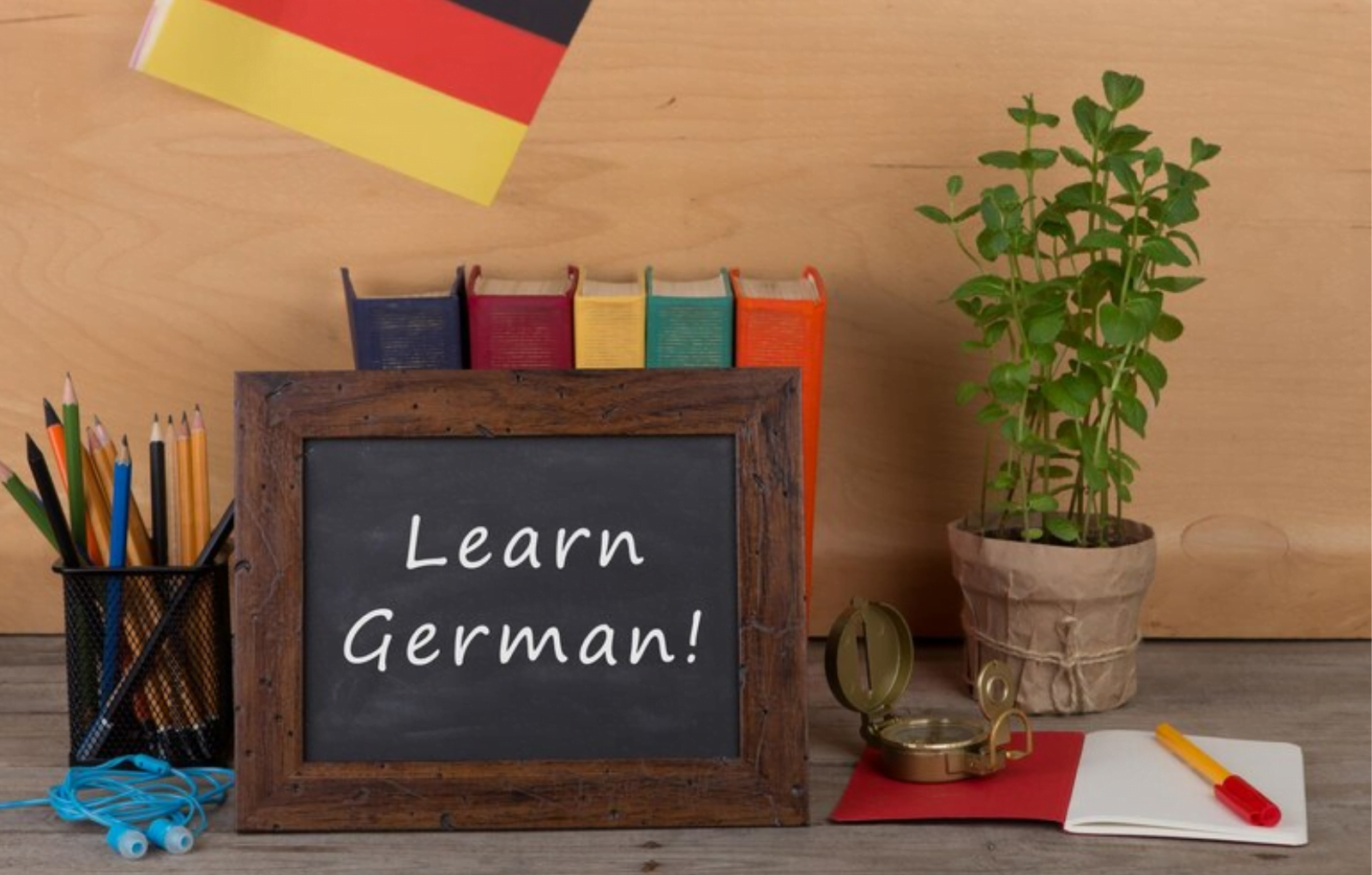
Our Blogs
Empowering your people to do more, be more. Corporate training that is interactive, engaging but most of all, effective.
Aug 30, 2024

Learning German can open doors to a wealth of opportunities, both personally and professionally. However, teaching German to non-native speakers poses unique challenges. As a Learning & Development professional, you understand the importance of equipping your workforce with the language skills necessary to thrive in today’s global business landscape. German, in particular, has become an increasingly valuable asset, opening doors to new opportunities and enhancing cross-cultural collaboration.
According to a recent report by the European Commission, German is the most widely spoken native language in the European Union, with approximately 100 million speakers. Furthermore, a study by the British Council highlights German as one of the top languages for the future, emphasizing its importance in international business and diplomacy.
In this blog, we’ll explore some of the most effective techniques for teaching German to non-native speakers, supported by research and practical tips to enhance language acquisition.
1. Incorporate Contextual Learning
Contextual learning refers to teaching language in a way that is relevant to real-world situations. This technique helps learners apply German in practical contexts, which enhances retention and understanding.
According to a study by the National Foreign Language Resource Center, “contextualized learning activities are shown to increase student engagement and improve language acquisition” .
Practical Application:
- Role-Playing: Create scenarios where learners must use German in simulated real-life situations, such as ordering food in a restaurant or navigating public transportation.
- Task-Based Learning: Assign tasks like planning a trip or creating a presentation in German, allowing students to use the language in meaningful ways.
2. Leverage Neurolinguistic Programming (NLP) Techniques
Neurolinguistic Programming (NLP) focuses on the relationship between language, behavior, and the mind. It can be particularly effective in language learning by addressing how learners process and retain new information.
According to a study published in the International Journal of Language and Linguistics, “NLP techniques can enhance language learning by improving learners’ cognitive processes and memory retention” .
Practical Application for teaching German to non-native speakers:
- Anchoring: Use specific cues or triggers (like a word or phrase) that help learners recall German vocabulary or phrases. For example, associating the German word “Apfel” (apple) with a specific gesture or image can enhance memory.
- Visualization: Encourage learners to visualize scenarios where they use German, helping them to mentally rehearse and internalize language patterns. Create authentic language learning experiences by transporting learners into virtual German-speaking environments. This immersive approach enhances cultural understanding and accelerates language acquisition. A study by Sanchez-Vives and Slater demonstrated the effectiveness of VR in language learning, showing improved vocabulary acquisition and pronunciation.
“Engaging lessons not only enhance knowledge retention but also foster a sense of excitement and ownership in the learning process,” says Jane Doe, a Learning & Development Executive at a leading global organization. “When learners feel invested in their own progress, they’re more likely to persist through the challenges of mastering a new language.
3. Incorporate Music Therapy
Music therapy involves using music to support learning and emotional well-being. This technique can be particularly effective in language learning, as music can improve memory, pronunciation, and emotional connection to the language.
Research from the Journal of Cognitive Neuroscience suggests that “music can enhance language learning by tapping into the brain’s rhythm and memory systems” (source).
Practical Application:
- German Karaoke: Organize karaoke sessions where learners sing German songs. This helps with pronunciation and vocabulary retention.
- Lyric Analysis: Use German song lyrics to teach new vocabulary and grammar structures. Analyze the lyrics to understand their meaning and context.
4. Promote Immersive Experiences
Immersion is a highly effective technique that involves surrounding learners with the target language in various contexts. This method accelerates language learning by increasing exposure and practice.
The American Council on the Teaching of Foreign Languages (ACTFL) highlights that “immersion techniques lead to higher levels of proficiency and better communicative competence” (source).
Practical Application:
- German Media: Encourage learners to watch German films, listen to German music, and read German books or articles.
- Language Exchange Programs: Facilitate language exchange partnerships where learners can practice German with native speakers.

5. Focus on Communicative Competence
Communicative competence involves teaching learners not just the rules of grammar and vocabulary but also how to effectively use the language in various contexts.
As noted by the Cambridge University Press, “emphasizing communicative competence helps learners become more confident and effective in real-life communication”.
Practical Application:
- Conversation Practice: Regularly practice speaking German through conversation clubs or language meetups.
- Feedback Mechanisms: Provide constructive feedback on learners’ language use to help them improve their communicative skills.
Another valuable technique for teaching German to non-native speakers is the use of spaced repetition, which has been shown to enhance long-term memory retention. A study by the University of Waterloo found that incorporating spaced repetition into language learning programs can significantly improve vocabulary acquisition and overall proficiency. Explore ways to integrate this method into your lesson plans, such as using flashcards, quizzes, or digital learning platforms that leverage spaced repetition algorithms.
6. Implement the “Shadowing” Technique
The “shadowing” technique involves mimicking native speakers’ pronunciation and intonation in real-time. This method helps learners develop natural speech patterns and improve their speaking skills.
According to the International Journal of Applied Linguistics, “shadowing can significantly improve pronunciation and fluency by providing learners with immediate feedback and practice” (source).
Practical Application:
- Audio Shadowing: Have learners listen to a German audio clip and repeat it simultaneously, focusing on matching pronunciation and intonation.
- Video Shadowing: Use videos of native speakers and have learners shadow their speech, paying attention to body language and facial expressions as well.
7. Adopt Differentiated Instruction
Differentiated instruction involves tailoring teaching methods to accommodate different learning styles and abilities. This approach ensures that all learners can engage with the material effectively.
Research by the Center for Responsive Schools shows that “differentiated instruction meets diverse learner needs and helps improve overall language proficiency” (source).
Practical Application:
- Varied Activities: Use a mix of activities, such as games, group work, and individual exercises, to address different learning styles.
- Flexible Grouping: Group learners based on their proficiency levels and adjust groupings as needed to provide targeted support.
Conclusion
Teaching German to non-native speakers involves a combination of effective techniques, from contextual learning and interactive technology to immersive experiences and cultural awareness. By adopting these strategies, Learning & Development Managers, Training Managers, and HR professionals can enhance their language training programs and help learners achieve fluency more effectively.
The Training Booth network is committed to delivering exceptional German language training solutions tailored to your specific needs. Our expert instructors combine cutting-edge methodologies with a deep understanding of workplace communication to ensure maximum impact.
Unlike traditional language training providers, we focus on practical, real-world German language skills essential for business success. Our programs are designed to enhance intercultural competence and equip your team with the confidence to thrive in global markets.
From beginner to advanced levels, we offer a comprehensive range of German language courses, including:
- Business German: Develop the language skills needed to excel in international business negotiations, presentations, and correspondence.
- Technical German: Master the specialized vocabulary and terminology required for engineering, manufacturing, and other technical fields.
- Cultural Immersion Programs: Immerse your team in German culture through interactive workshops and virtual experiences.
By partnering with The Training Booth, you’re investing in your employees’ future and your organization’s global success. Contact us today to learn more about our German language training programs and embark on a journey of linguistic and cultural transformation.
Empower your team to connect globally through language proficiency!
